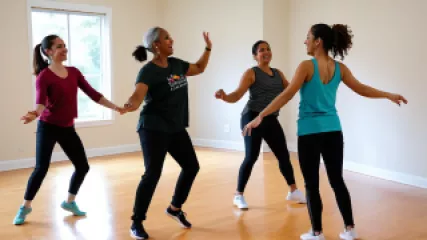What are the benefits of remote dance therapy?
Introduction
Dance Movement Therapy (DMT) is a therapeutic approach that utilizes the expressive and creative nature of dance to promote healing and well-being. Traditionally, DMT sessions have taken place in person, with participants engaging in various movement exercises guided by a trained therapist. However, with advancements in technology and the rise of virtual platforms, remote dance therapy has emerged as an alternative option for individuals seeking the benefits of this unique form of therapy.
In this article, we will explore the numerous benefits of remote dance therapy and how it can be a valuable tool for self-expression, emotional release, and personal growth. Whether you are a seasoned dancer or someone with no prior dance experience, remote dance therapy offers a safe and accessible space to explore your inner world and connect with others.
The Benefits of Remote Dance Therapy
1. Self-Expression
Remote dance therapy provides a platform for individuals to express themselves in a non-verbal manner. For those who struggle with finding the right words to communicate their emotions, dance allows them to tap into their innermost feelings and express them through movement. This form of self-expression can be particularly powerful for individuals who have experienced trauma or find it challenging to verbalize their emotions.
Through guided exercises and improvisation, remote dance therapy encourages participants to explore their unique movement vocabulary and discover new ways of expressing themselves physically. The therapist acts as a supportive guide, creating a safe and non-judgmental space for individuals to freely express their emotions and experiences.
Furthermore, remote dance therapy offers a sense of anonymity and privacy that can be beneficial for individuals who may feel self-conscious about dancing in front of others. Participants can engage in the therapy session from the comfort of their own homes, allowing them to let go of inhibitions and fully immerse themselves in the therapeutic process.
2. Emotional Release
Engaging in dance can be a powerful tool for emotional release and catharsis. Movement has the ability to unlock stored emotions and release them from the body, providing individuals with a sense of relief and release. Remote dance therapy allows participants to connect with their emotions in a safe and supportive environment, enabling them to process and release pent-up feelings.
During remote dance therapy sessions, participants are encouraged to explore different movement qualities, such as flowing, sharp, or sustained movements. These varying qualities of movement can help individuals access and express different emotions. For example, fast and sharp movements may represent anger or frustration, while slow and gentle movements may convey sadness or vulnerability.
The therapist guides participants through these movement explorations, facilitating a deeper connection with their emotions and providing opportunities for catharsis. By engaging in expressive movement, individuals can release emotional tension, reduce stress, and experience a greater sense of emotional well-being.
3. Body Awareness and Mind-Body Connection
Remote dance therapy promotes body awareness and fosters a stronger mind-body connection. Through the practice of mindful movement, participants learn to tune into their bodies, becoming more attuned to physical sensations, emotions, and thought patterns.
The therapist guides participants in exploring their bodily sensations and encourages them to notice any areas of tension, discomfort, or ease. By bringing attention to these sensations, individuals can develop a greater understanding of their bodies and gain insights into how their physical and emotional states are interconnected.
Remote dance therapy also offers opportunities for grounding and centering exercises, helping individuals cultivate a sense of presence and embodiment. By connecting with their bodies in a meaningful way, participants can experience a greater sense of self-awareness and develop strategies for self-regulation.
4. Social Connection and Community
Despite physical distance, remote dance therapy provides opportunities for social connection and the formation of a supportive community. Through virtual platforms, individuals from different locations can come together and engage in shared movement experiences.
The therapist facilitates group exercises and encourages participants to connect with one another through movement. This collective experience fosters a sense of belonging and can help combat feelings of isolation or loneliness, particularly in times when in-person interactions may be limited.
Remote dance therapy sessions often include moments of reflection and discussion, allowing participants to share their experiences and insights with the group. By engaging in these conversations, individuals can gain new perspectives, receive validation, and build meaningful connections with others who may be going through similar experiences.
5. Personal Growth and Empowerment
Engaging in remote dance therapy can lead to personal growth and empowerment. Through the exploration of movement and the development of a deeper understanding of oneself, individuals can gain valuable insights, enhance their self-esteem, and cultivate a greater sense of agency over their lives.
Remote dance therapy sessions often incorporate goal-setting exercises, where participants are encouraged to identify areas they would like to work on or explore further. This process of self-reflection and goal-setting empowers individuals to take an active role in their own healing journey.
Over time, remote dance therapy can help individuals build resilience, enhance their emotional well-being, and develop a greater sense of self-acceptance. By embracing their unique movement expression and connecting with their inner resources, individuals can tap into their innate capacity for growth and transformation.
"Remote dance therapy offers a safe and accessible space to explore your inner world and connect with others."- Reuben Evans, Dance Movement Therapist
Conclusion
Remote dance therapy provides numerous benefits for individuals seeking a therapeutic approach that combines movement, self-expression, and emotional well-being. Through the use of virtual platforms, this form of therapy offers accessibility and convenience, allowing individuals to engage in the process from the comfort of their own homes.
By embracing remote dance therapy, individuals can experience the profound effects of self-expression, emotional release, body awareness, social connection, and personal growth. Whether you are seeking support for trauma, stress, or simply looking for a creative outlet, remote dance therapy offers an innovative and effective approach to healing and self-discovery.
Embrace the power of movement and embark on a transformative journey through remote dance therapy.






